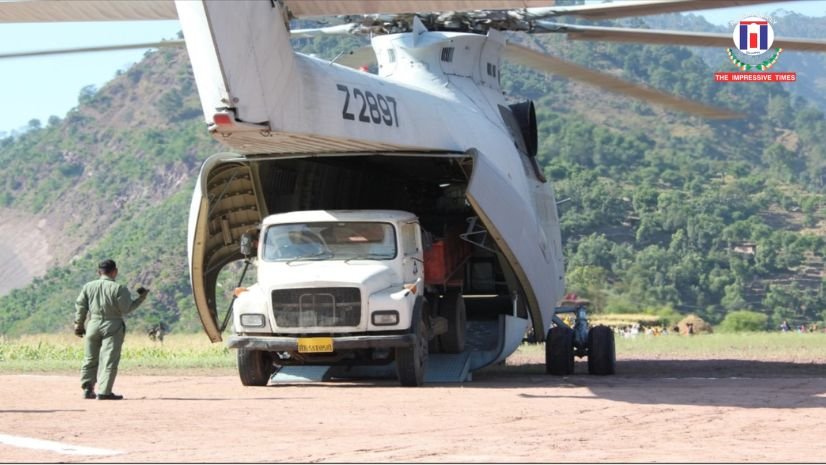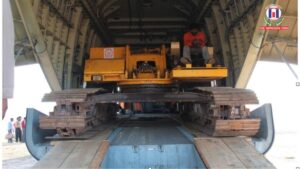
Brief history and time line: Linking Kashmir with Indian Railway network is centuries old dreams. The first idea for building a narrow gauge rail link to the Kashmir Valley was mooted over a century ago, when foundation stone laid for Jammu – Srinagar rail link by Maharaja Pratap Singh on 1st March 1892, later in 1898 by Maharaja Ranbir Singh. Four viable routes were found to link Punjab with Srinagar and the Kashmir Valley, the Banihal route from Jammu, the Poonch route via the Jhelum Valley, the Panjar route from Rawalpindi also via the Jhelum Valley and the Abbottabad route from Kalako Serai though Hazara in the upper Jhelum Valley. Detailed surveys were conducted for a mix of meter and broad gauge tracks. However, the inhospitable climate, the tricky terrain, restricted resources and history confined this idea to survey reports and drawing boards.
In 1905 the British also revisited the idea and Maharaja Pratap Singh agreed to the line between Jammu and Srinagar via Reasi following the Moghul road. This plan envisaged a narrow gauge track to cross the Pir Panjal range, but the project remained a dream only.
The project was considered several times after independence also, but it was only in the year 1981 sanction was given for the Jammu-Udhampur Rail link project.
In 1994-95, the final Rail link between Udhampur– Srinagar–Baramulla (USBRL) was sanctioned and in the year 2002, the central government declared this Railway line a National Project.

Some of the important key events/ mile stones during the journey of making reality the dream of connecting Kashmir valley with the network of Indian Railways are as follows:
SOCIO-ECONOMIC DEVELOPMENTS:
With a view to accelerate progress of construction of Approach road up to most remote part of project, i.e Sawalkote ,airlift of heavy construction machineries using army helicopters from Jammu airport was done. A table top helipad was constructed by levelling a 100 m x 40m stretch of land near Surukote village in between Dugga and Sawalkote using mere hand tools. MI-26 Helicopters was used for heli-lifting of heavy construction machines, sorties had been conducted and 226 MT load was air lifted to Surukot (Photo enclosed).
With the completion of these approach roads, the connectivity of large number of surrounding villages such as Guni, Paikhad, Gran, BatalGala, Bakkal, Kauri, Dugga, Surukot, sawalkot, Basindhadhar, Ind, Baralla, Sangaldan, Talwa, Dharam,kholi, Megdar, sumbar, urnihal, siran, kundan, khari, Hingni, Arpinchala, Tatnihal, Chaplain, Bankoot etc. to name a few in Jammu & Kashmir have drastically improved. It has ensured connectivity to about 70 villages consisting of about 1.5 lacs population.
Earlier, the access to these villages was primarily through footpaths or by boat to some extent. Locals would walk along slippery slopes and rock ridges of the hardest, torn terrain to reach to township having roads and means of transport to travel to district headquarters and other places. These villages were cut off from civilization due to lack of roads.
It would be worthwhile to witness the changing landscape of commercial activities in these villages with the opening of market places, repair workshop, roadside local restaurants (dhabas) etc. it has opened up new avenues and vistas of opportunities to remotely located population
These remote villages and towns, which were bereft of even the most basic facilities, are becoming centre of learning and commercial activities.
The USBRL project provides faster and more reliable transport options, reducing travel time significantly. This improved connectivity benefits both people and goods, enabling better movement between remote and urban areas. The railway line connects key pilgrimage sites like Shri Amarnath Cave temple, Hazratbal shrine, Charar-e-Sharif etc. and beautiful picturesque Kashmir valley, attracting more devotees and tourists to the region. This boosts the tourism industry, leading to increased business for local hotels, restaurants, and other services.
The construction of the new railway line in the USBRL project will significantly impact the socio-economic development of Jammu & Kashmir. It will improve infrastructure, generate employment, boost trade, and enhance connectivity, leading to long-term economic prosperity. Additionally, it will contribute to greater social integration, better access to essential services, and overall improved living standards for the people of the region. This multi-faceted development ensures that the USBRL project plays a crucial role in transforming the socio-economic landscape of Jammu & Kashmir.















No Comments: